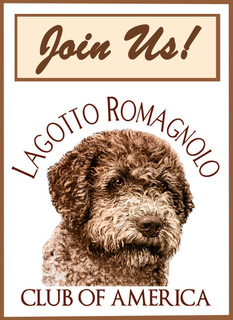|
Stopping Unwanted Behavior
Before we can work on stopping unwanted behavior, we need to do a quick review about understanding animal behavior in general. Take a few minutes to go back and reread the Understanding Animal Behavior Training Tip. The three principals apply.
Principle #1: Behaviors that get rewarded get repeated
Principle #2: There is no such thing as bad behavior to a dog
Principle #3: Two behaviors cannot occupy the same place at the same time.
By now, you have probably had lots of experience rewarding wanted behavior and have a dog that will do things you ask of him. Because you have rewarded and praised the behavior and the dog has learned that doing those behaviors leads to good things. Although we like to think we are the most important influence in our dog ’s life, not all behavior occurs because we have rewarded it. Sometimes a behavior is just fun intrinsically. So, as strange as it might sound, what we believe is rewarding to our dog and what we believe is punishing to the dog are not always the experienced that way by the dog. In order to extinguish unwanted behavior, we need to try to determine how it is being rewarded or reinforced. Our dog may be a finicky eater and what we are offering as a treat isn ’t perceived as a delicious snack. We might yell at our dog, plainly shouting to “stop it” and “bad dog,” yet he continues to do the unwanted behavior. In both cases, what we are doing to get wanted behavior and stop unwanted behavior isn ’t having the desired effect. Sometimes, it takes some reflection about our past experiences and what this particular dog seems to like and respond to before we can work out a plan to stop unwanted behavior.
EXAMPLE: DIGGING
The dog goes merrily along doing whatever strikes his fancy, because to the dog, there is no such thing as bad behavior. Some things are really fun to the dog and are rewarded intrinsically and therefore get repeated. A great example of this with a Lagotto is their love of digging! The human probably never taught this behavior to the dog. It just happened naturally and the dog enjoyed it. If the digging behavior is in the human ’s vegetable garden, the human thinks of the behavior as “bad” while the dog thinks it is fun! So, first action is to stop the garden digging behavior by taking away the possibility for the unwanted behavior to occur. An option in this case is putting a fence around the garden as a solution. Keeping the dog on a leash when in the area of the garden, and stopping the dog from going into the garden could also accomplish it. It takes about 3 weeks to change a behavior like this, so you need to have lots of patience and work on changing the behavior every day, by taking away the possibility for the digging to occur in the garden and engaging the dog in some acceptable behavior such as a treat search or going on a slow walk will be necessary if there is not going to be a garden fence.
Another approach, if the digging is OK in some places, but not in others, like the garden could also work. If digging is acceptable in some other part of the yard, take the dog to that area and encourage the digging. Some people have purchased a few bags of sand to dump in a corner. Others bought a wading pool and put something like sand or lightweight balls in the pool for the dog to have in their special digging area. The dogs are encouraged and rewarded for digging the place designated by you and are taken away from the vegetable garden where digging is not OK. To encourage digging in the spot you desire, take a shovel and dig, with your dog nearby. He will probably get the idea and come to help. If not, you can take a favorite toy or something new, and make a big deal about burying it a few inches below ground in the digging spot. Ask you dog to “Find it.” Stand near the place were the object was buried and look at it. If your dog still doesn ’t start to dig, start to dig a bit yourself. Give lots of praise for the digging in this area. Again, the same time frame of 3 weeks of actively offering another behavior other than digging in the garden needs to be pursued. If you look back over this example, you should be able to identify how the 3 Behavior Principles were considered in stopping unwanted behavior.
EXAMPLE: RUNNING OFF/NOT COMING WHEN CALLED
You have taught your dog to come to you, using the technique described in the “Come” tip. Some time has passed and it seems like the dog comes only when he wants to do so or is ready for something else at his timetable, not yours.
Again we refer to the three principles. At this point, it seems like the dog is being rewarded intrinsically and the joy of not coming when called has replaced the trained behavior to come when called. Whatever you are doing to reinforce the coming when called behavior is not as reinforcing as running free. Remember that there is no such thing as bad behavior to the dog. It is just being a dog and doing what is the most rewarding/reinforcing. Go back to the things to keep in mind in the “Come” tip. Often one or more of these is no longer being done. Most often the issue lies with the human and not the dog!
We need to rely heavily on the third behavior principle and realize that two behaviors cannot occupy the same place at the same time. So, now that you have thought about the three behavior principles and how they apply in this case, the next step is to eliminate the possibility for the unwanted behavior to occur. That means going back to having your dog on a leash for control and going back to teach “Come” all over again. You need to go through all the steps and be sure that you are using a reinforcing treat that your dog would agree is reinforcing. When retraining a command, you will be usually able to do it more quickly as there will be what they call “spontaneous recovery” of the prior learning.
If you look back over this example, you should be able to identify how the 3 Training Principles were considered in stopping unwanted behavior. Another tip when retraining is to have treats in your pocket when you are both inside and outside. I do use my reward maker and touch as well as food for reinforcement, but a bit of cheese or yummy hotdog is always welcome. Another thing I do is to have a variety of treats in the pocket—yummy, high-value ones as well as his regular kibble or something as innocuous as Cheerios! The dog never knows what kind of treat it will be! Also remember, that most of the time, the dog wants to be with you and please you. Rather than move toward the dog when it is not responding to the “Come” command, try facing away from the dog and slowly walking away. The dog will often look back to see what you are doing and, equally often, will come running back to be with you.
GENERALIZING STOPPING UNWANTED BEHAVIOR
Regardless of the unwanted behavior, the steps to stopping it are the same. Try to identify the reinforcement that is occurring to have the behavior continue. Think about whether the unwanted behavior is always unwanted or if it is OK under certain conditions. If it is OK sometimes, try to come up with a cue or word you can use to let the dog know that it is OK to do the behavior and train for that. Ask yourself if the unwanted behavior worth extinguishing. Sometimes we ask our dogs for a behavior for our own reasons and they aren ’t necessarily necessary. For example, having your dog lying down while you prepare his food. Ask yourself if it would so unacceptable for the dog to stand beside you and watch the preparations for his favorite time of the day? Remember, there is no such thing as bad behavior to a dog unless you teach it otherwise. Last, by remembering that two behaviors can ’t occupy the same place at the same time and work on fun behaviors that you and your dog can do instead!


